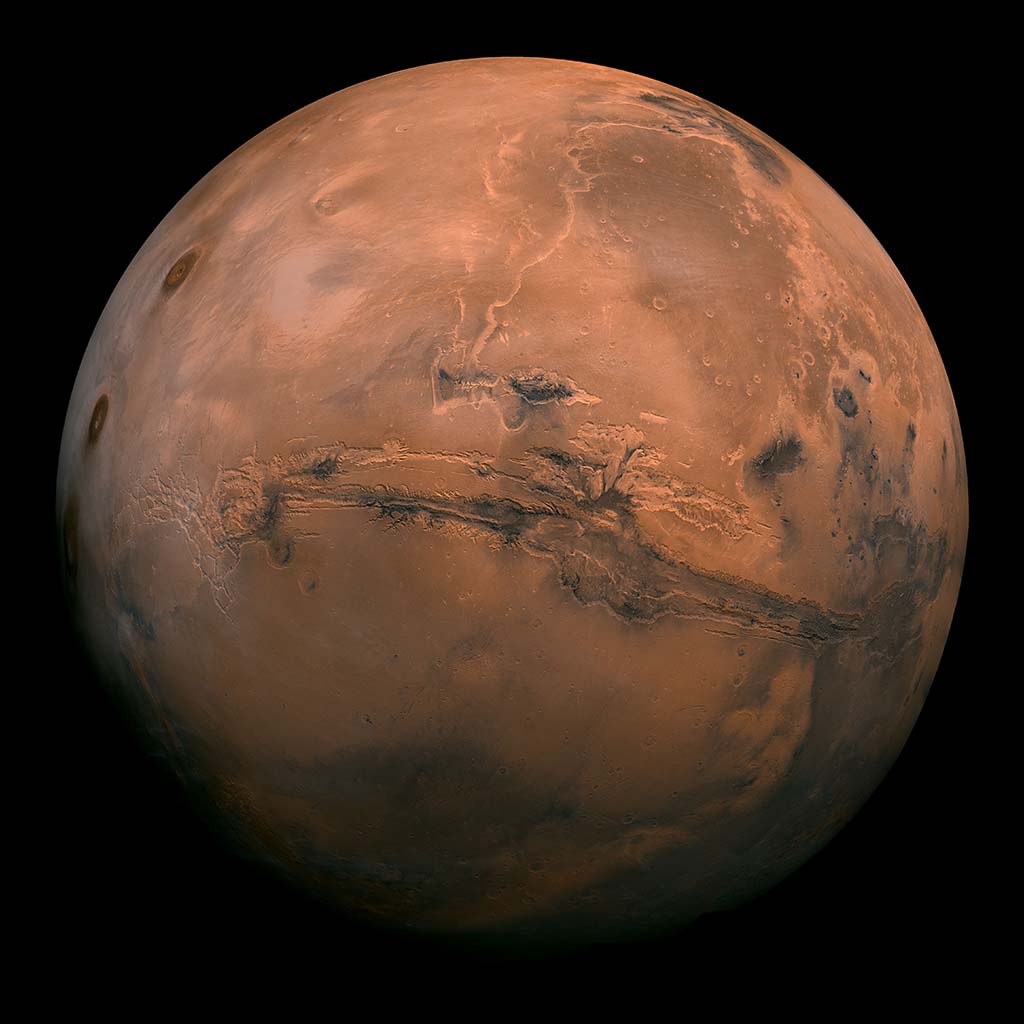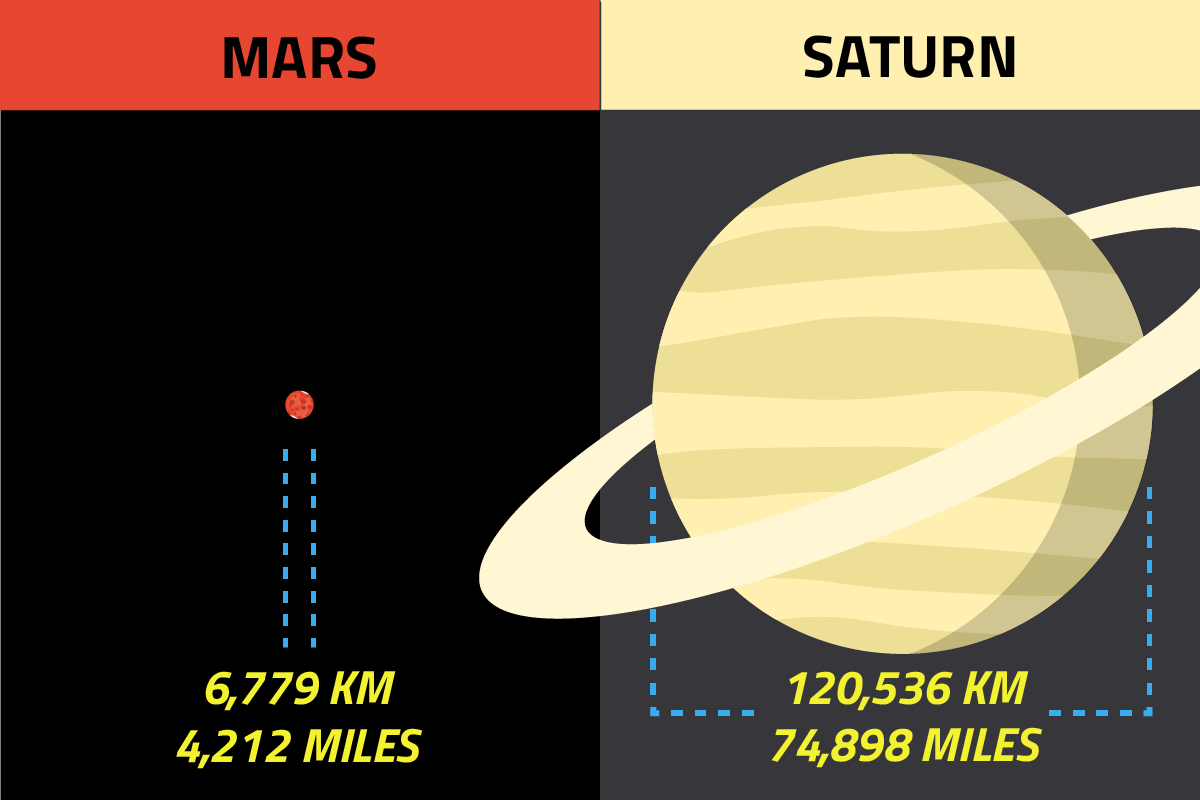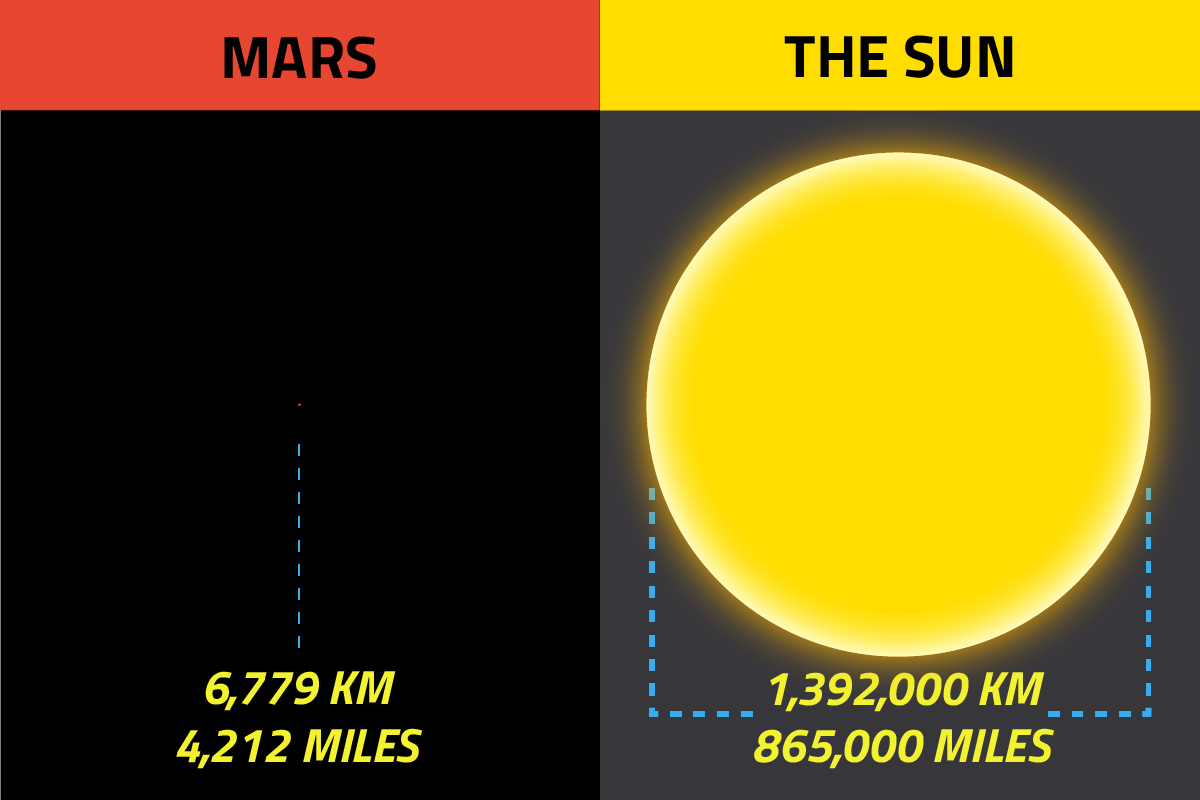Welcome to Mars
Mars, the Red Planet, is the fourth planet from the Sun and the last of the inner planets. Beyond it lies the asteroid belt and then the outer planets. Mars is just over half the size of Earth and perhaps, once upon a time, had conditions similar to Earth. It's now a cold, dry, desolate planet, with only a collection of spacecraft sent from Earth for company. Some keep a watch of Mars while orbiting it, others trundle over its surface or poke its rocks. As Mars was once a wet planet, and still has some water hidden away, scientists are keen to look for signs of life there. Also orbiting Mars are two moons, Phobos and Deimos.
 Composite of 102 images of Mars from Viking 2, courtesy of NASA/JPL-Caltech
Composite of 102 images of Mars from Viking 2, courtesy of NASA/JPL-Caltech
141,624,742 miles
1.52 A.U.
4,212 miles
Min: -153 °C / -243 °F
Max: 20 °C / 68 °F
Mars is the fourth planet from the Sun and the last of the four inner planets. If you continue travelling outwards and successfully get through the Asteroid Belt, you're in the region of the giant outer planets. But, we're not going there just yet. We're staying at Mars.
Mars orbits the Sun at a distance of 228 million kilometres (142 million miles) although its elliptical orbit means that it can get as close as 206 million kilometres (128 million miles) from the Sun and as far away from it as 249 million kilometres (155 million miles). It takes 687 to make a full journey around the Sun, so a year on Mars is 687 days long.
The closest planet to orbit Mars is Earth. Being one of Earth's neighbours, Mars is a popular choice for space missions. Several space craft have already visited the red planet, but so far human beings haven't gone along for the ride yet. 2033 is currently a target year for this to happen by the USA and China.

Mars has a diameter of 6,779 kilometres (4,212 miles). This makes it the second smallest planet in the solar system. It is just over half the size of Earth and Venus. The only planet smaller than it is Mercury.
Even though Mars is a fairly small planet, its proximity to Earth means that it is one of the easiest and brightest objects to spot in the sky. Only the Sun, the Moon and Venus are brighter in the night sky.
Here's a photograph of the Moon with Mars just to the bottom left of it. This was taken on an evening in April 2014 when Mars made a close approach to Earth. The picture shows the red glow of Mars and why it is known as the Red Planet.


Despite being separated by millons of miles of space, Mars and Earth have a lot in common with each other. At one point, Mars was likely to have been very similar to Earth, with lakes and oceans of water flowing freely around the planet. Whether there was life in those lakes and oceans is yet to be discovered.
Something else that Mars and Earth have in common are that both planets have seasons. Just like Earth, Mars has a winter, spring, summer and autumn - or fall as you may also know it. Although there are no trees for leaves to fall from or animals to go into hibernation on Mars, the weather on Mars changes throughout its year.
All planets in the solar system have an axis, an invisible line running through them which they rotate on. The reason that seasons happen on both Mars and Earth is because both planets are slightly tilted on their axiseses. Anyone know what the plural of axis is? Hmmm, we'll stick with axiseses until we find out. Both planets lean about the same amount as each other. This means that as they travel around the Sun, one half of the planet points towards it while the opposite half points away from it. The side pointing towards it gets more heat and light from the Sun, so goes through summer, while the half pointing away gets less heat and light, so has winter. As the year progresses, the half that was pointing towards the Sun begins pointing away from it, and the half pointing away starts to point towards it, so the seasons gradually change.
A Martian summer is much cooler than one on Earth. The average temperature on Mars is -28 °C (-62 °F). Earth's average temperature is 16 °C (61 °F). Summer temperatures are still usually around freezing on Mars although can reach up to 20 °C (68 °F) near the equator during the day. Night time temperatures plummet and at the poles, temperatures can be as cool as -153 °C (-243 °F). The poles on Mars also have ice caps, just like Earth has. These grow and shrink throughout the year because of the changing seasons. The poles mostly contain frozen water ice.
A day on Mars isn't much longer than a day on Earth. It takes Mars 24 hours and 40 minutes to spin once on its axis, compared with very nearly 24 hours for Earth. A day on Mars is called a Sol, so a Sol on Mars is 24 hours and 40 minutes long.
Apparently the plural of axis is axes. Now we know this, I think we may need to redo our tilt picture to include axes.
















